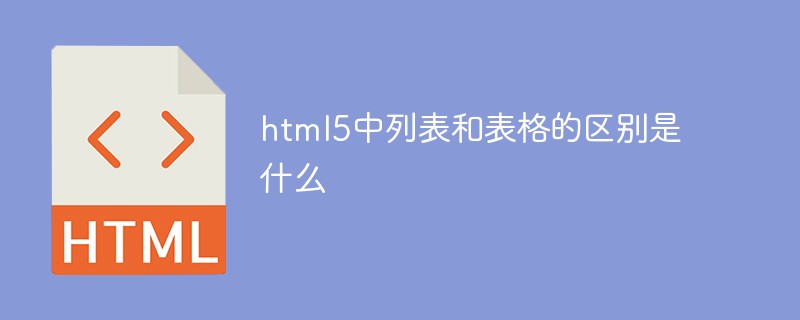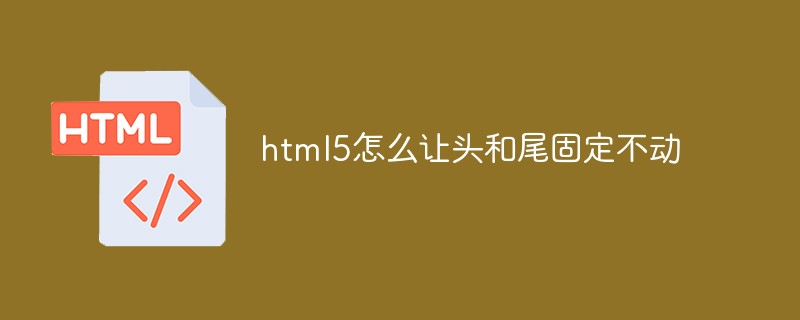 Web Front-end
Web Front-end H5 Tutorial
H5 Tutorial Detailed explanation of how to make various lists on H5 mobile terminal (3)
Detailed explanation of how to make various lists on H5 mobile terminal (3)How to make various lists on H5 mobile terminal (3)
Review of previous situation
In the previous blog post "Mobile terminal In "Various List Making Methods (2)", we use two DEMOs to demonstrate the list making that is more demanding in mobile H5. However, it seems to be quite simple. This Chapter, then go deeper.
If you saw this article first, it is recommended that you go to the link above and read the corresponding content first, so that the context is coherent and it is easier to understand the content of this article.
List with small icons
In the above two chapters, we made some ordinary lists. In mobile H5, we often make lists with one small icon per line. In this DEMO, we Let’s make this type of list. The example is as shown below.

I will not use the small icon here, but draw a circle instead.
html code
<!DOCTYPE html>
<html lang="en">
<head>
<meta charset="UTF-8">
<meta name="viewport" content="width=device-width, initial-scale=1.0, maximum-scale=1.0, user-scalable=0" />
<title>list 1</title>
<link rel="stylesheet" href="../style/style.css"></head><body>
<p class="list_1">
<ul>
<li><a href=""><i class="ico ico_1"></i>这是一个列表1</a></li>
<li><a href=""><i class="ico ico_2"></i>这是一个列表2</a></li>
<li><a href=""><i class="ico ico_3"></i>这是一个列表3</a></li>
<li><a href=""><i class="ico ico_4"></i>这是一个列表4</a></li>
<li><a href=""><i class="ico ico_5"></i>这是一个列表5</a></li>
<li><a href=""><i class="ico ico_6"></i>这是一个列表6</a></li>
<li><a href=""><i class="ico ico_7"></i>这是一个列表7</a></li>
<li><a href=""><i class="ico ico_8"></i>这是一个列表8</a></li>
</ul></p></body></html>The html code here is different from the previous example. Here we add a i tag to make the icon. Give each i# The ## tag plus different class is to customize different icons.
.list_1 { ul {padding-left: 1.6rem;}
li { border-bottom: 1px solid #ddd;padding-right: 1.6rem;
a {
display: block;height: 4rem;line-height: 4rem;overflow: hidden;font-size: 1.4rem;
background:url("../image/icon_goto.png") right center no-repeat;
background-size: auto 1.4rem;
padding-left: 3rem;
position: relative;
}
.ico {
display: block;width: 2.4rem;height: 2.4rem;position: absolute;left: 0;top: .8rem;
background: #f60;border-radius: 50%;
}
}
}
In this example, we use the positioning layout method. If you don’t know much about positioning layout, please read my blog post "Css Detailed Interpretation of Positioning Attributes and Parameters".In addition, since each icon must be different, I give each icon in the html i tags are added with different classes to facilitate calling different icon images in CSS. In other words, we use background images to make icons.
background-size to process the icons, about background-size## The use of # is explained in the previous chapter of this article. I will not go into details here. SASS loop, it is recommended to check the implementation method on the official website of Getting Started with Sass - Sass Tutorial. I will not elaborate too much here.
A list with icons, but the dividing line must be aligned with the text.
First, let’s look at the rendering:
 This list and The above list looks no different at first glance. But if you look closely, you will find that the dividing line is aligned with the text, not the icon.
This list and The above list looks no different at first glance. But if you look closely, you will find that the dividing line is aligned with the text, not the icon.
Don’t blame me for being awkward, that’s how the designer designed it. If it is not done, the designer will be very angry.
The html code is consistent with the DEMO above. I won’t repeat it here
Without further ado, adjust the css
The left padding of SASS code
.list_1 {
ul {padding-left: 4.6rem;}
li {
border-bottom: 1px solid #ddd;
padding-right: 1.6rem;
position: relative;
a {
display: block;height: 4rem;line-height: 4rem;overflow: hidden;font-size: 1.4rem;
background:url("../image/icon_goto.png") right center no-repeat;
background-size: auto 1.4rem;
}
.ico {
display: block;width: 2.4rem;height: 2.4rem;position: absolute;left: -3rem;top: .8rem;
background: #f60;border-radius: 50%;
}
}
}originally on
a is added to ul. In this way, li can be compressed to achieve The effect of reducing the edge. In the processing of the icon, the left
value uses a negative number and is moved above the ul filling. The design effect is achieved.Summary
This chapter does not focus on how to deal with SASS loops. These are technical issues. You can learn them quickly by referring to the SASS tutorial.
I am here Assume that the background image method is used to realize small icons. Of course, there are many ways to realize the production of small icons, such as CSS icons, such as font icons. Each of these implementation methods has its own advantages and disadvantages, which is not the issue I will consider today. .
This chapter focuses on the following points:
- Positioning layout. This is very important.
- Flexible use For various elements, use inner filling or outer filling to achieve the effect you want.
- Use different class names to achieve different small icons.
The above is the detailed content of Detailed explanation of how to make various lists on H5 mobile terminal (3). For more information, please follow other related articles on the PHP Chinese website!
 html5的div一行可以放两个吗Apr 25, 2022 pm 05:32 PM
html5的div一行可以放两个吗Apr 25, 2022 pm 05:32 PMhtml5的div元素默认一行不可以放两个。div是一个块级元素,一个元素会独占一行,两个div默认无法在同一行显示;但可以通过给div元素添加“display:inline;”样式,将其转为行内元素,就可以实现多个div在同一行显示了。
 html5中列表和表格的区别是什么Apr 28, 2022 pm 01:58 PM
html5中列表和表格的区别是什么Apr 28, 2022 pm 01:58 PMhtml5中列表和表格的区别:1、表格主要是用于显示数据的,而列表主要是用于给数据进行布局;2、表格是使用table标签配合tr、td、th等标签进行定义的,列表是利用li标签配合ol、ul等标签进行定义的。
 html5怎么让头和尾固定不动Apr 25, 2022 pm 02:30 PM
html5怎么让头和尾固定不动Apr 25, 2022 pm 02:30 PM固定方法:1、使用header标签定义文档头部内容,并添加“position:fixed;top:0;”样式让其固定不动;2、使用footer标签定义尾部内容,并添加“position: fixed;bottom: 0;”样式让其固定不动。
 html5中不支持的标签有哪些Mar 17, 2022 pm 05:43 PM
html5中不支持的标签有哪些Mar 17, 2022 pm 05:43 PMhtml5中不支持的标签有:1、acronym,用于定义首字母缩写,可用abbr替代;2、basefont,可利用css样式替代;3、applet,可用object替代;4、dir,定义目录列表,可用ul替代;5、big,定义大号文本等等。
 HTML5中画布标签是什么May 18, 2022 pm 04:55 PM
HTML5中画布标签是什么May 18, 2022 pm 04:55 PMHTML5中画布标签是“<canvas>”。canvas标签用于图形的绘制,它只是一个矩形的图形容器,绘制图形必须通过脚本(通常是JavaScript)来完成;开发者可利用多种js方法来在canvas中绘制路径、盒、圆、字符以及添加图像等。
 html5废弃了哪个列表标签Jun 01, 2022 pm 06:32 PM
html5废弃了哪个列表标签Jun 01, 2022 pm 06:32 PMhtml5废弃了dir列表标签。dir标签被用来定义目录列表,一般和li标签配合使用,在dir标签对中通过li标签来设置列表项,语法“<dir><li>列表项值</li>...</dir>”。HTML5已经不支持dir,可使用ul标签取代。
 Html5怎么取消td边框May 18, 2022 pm 06:57 PM
Html5怎么取消td边框May 18, 2022 pm 06:57 PM3种取消方法:1、给td元素添加“border:none”无边框样式即可,语法“td{border:none}”。2、给td元素添加“border:0”样式,语法“td{border:0;}”,将td边框的宽度设置为0即可。3、给td元素添加“border:transparent”样式,语法“td{border:transparent;}”,将td边框的颜色设置为透明即可。
 html5为什么只需要写doctypeJun 07, 2022 pm 05:15 PM
html5为什么只需要写doctypeJun 07, 2022 pm 05:15 PM因为html5不基于SGML(标准通用置标语言),不需要对DTD进行引用,但是需要doctype来规范浏览器的行为,也即按照正常的方式来运行,因此html5只需要写doctype即可。“!DOCTYPE”是一种标准通用标记语言的文档类型声明,用于告诉浏览器编写页面所用的标记的版本。


Hot AI Tools

Undresser.AI Undress
AI-powered app for creating realistic nude photos

AI Clothes Remover
Online AI tool for removing clothes from photos.

Undress AI Tool
Undress images for free

Clothoff.io
AI clothes remover

AI Hentai Generator
Generate AI Hentai for free.

Hot Article

Hot Tools

WebStorm Mac version
Useful JavaScript development tools

SAP NetWeaver Server Adapter for Eclipse
Integrate Eclipse with SAP NetWeaver application server.

MantisBT
Mantis is an easy-to-deploy web-based defect tracking tool designed to aid in product defect tracking. It requires PHP, MySQL and a web server. Check out our demo and hosting services.

SublimeText3 Chinese version
Chinese version, very easy to use

Dreamweaver Mac version
Visual web development tools





